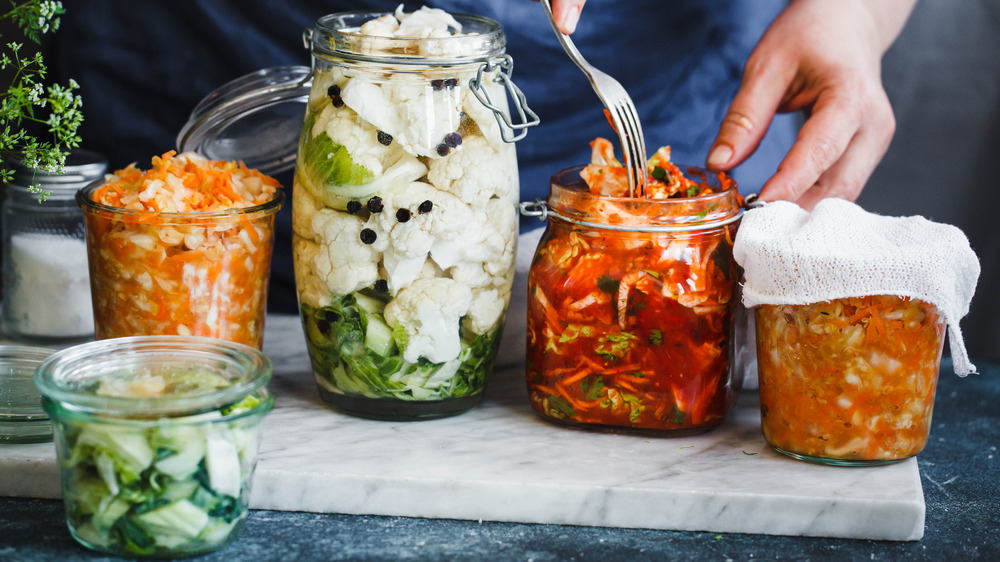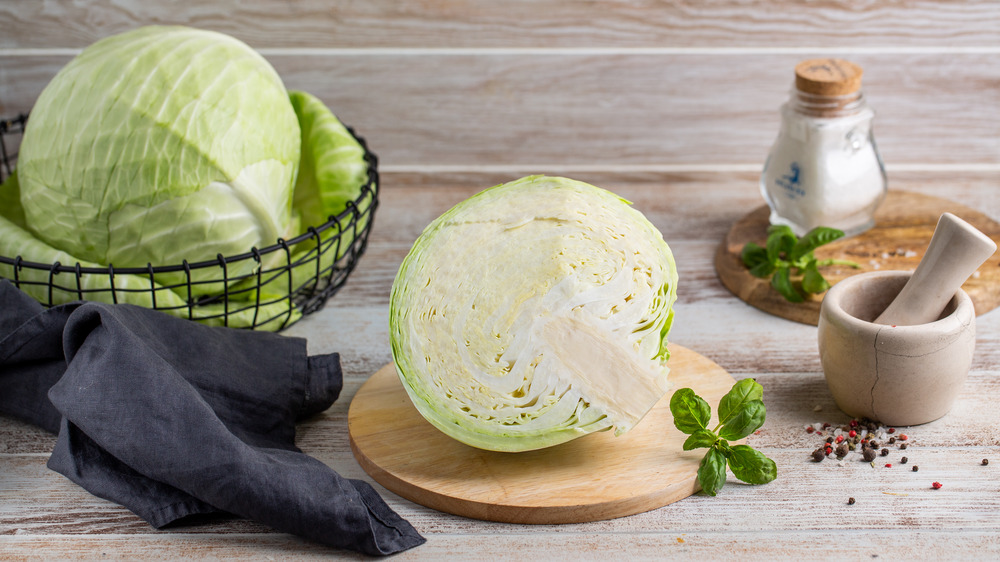What Is The Difference Between Kimchi And Sauerkraut?
Would you ever put kimchi on a hot dog? If the idea of doing so seems too far fetched for you, well, perhaps you've forgotten about sauerkraut. Though they originate from entirely different cuisines and continents (one being Korean and the other Eastern European, explains Chowhound) kimchi and sauerkraut are surprisingly similar. After all, both of these condiments at their core are fermented cabbage. In fact, both kimchi and sauerkraut are made the same way, using lactic acid fermentation.
Chowhound says whether it be for kimchi or for sauerkraut, the process works the same: The bacteria that forms over time ferments and preserves the natural sugars found in the cabbage. This makes for a uniquely acidic, yet sweet, flavor that can go perfect alongside almost any meal. The longer the fermentation period, the more developed and distinct the flavors. Kimchi and sauerkraut (like all fermented foods) are also great sources of probiotics, which is beneficial for overall digestive health.
Why don't kimchi and sauerkraut taste more alike?
While both kimchi and sauerkraut are made with cabbage, each uses a different variety — and that makes a big difference. Chowhound states that sauerkraut uses green or red cabbage, while kimchi uses Napa, along with a slew of other vegetables like radishes and scallions. Epicurious offers cucumbers, brussels sprouts, and even pears as some common kimchi additions. Depending on the combination of ingredients, the resulting kimchi will be sweeter or tangier.
Unlike kimchi, sauerkraut recipes don't tend to vary all that much. Aside from the fact that caraway seeds or other spices are occasionally added, sauerkraut is really only cabbage and salt. But don't let that fool you — though the ingredients themselves are simple, precision when putting them together is essential, as detailed in this Epicurious guide. That's because even with something as simple as sauerkraut, fermentation can be trickier than you'd think.
For a food that tastes good and also happens to be good for you, it's no wonder both sauerkraut and kimchi are staples of their respective cuisines. From soondubu jjigae (kimchi tofu soup) to Polish haluski (sauerkraut pasta), the best part of all is that there are endless cooking possibilities in store when you have a fully fermented batch of either cabbage dish.

